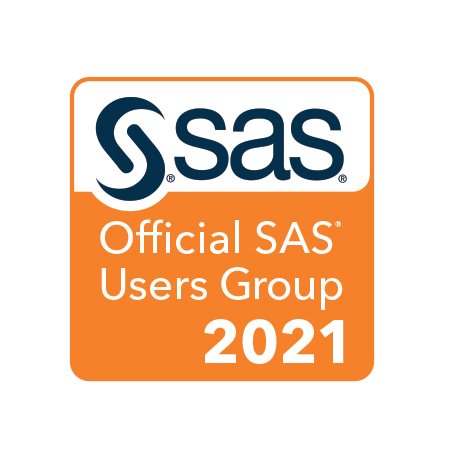Tips and Tricks to Using SAS® Enterprise Guide® in a BI World — Angela Hall
No need to fret, Base SAS® programmers. Converting to SAS® Enterprise Guide® is a breeze, and it provides so many advantages. Coding remote connections to SAS® servers is a thing of the past. Generate WYSIWYG prompts to increase the usage of the SAS code and to create reports and SAS® Stored Processes to share easily with people who don’t use SAS Enterprise Guide. The first and most important thing, however, is to change the default options and preferences to tame SAS Enterprise Guide, making it behave similar to your Base SAS ways. I cover all of these topics and provide demos along the way.
An Introduction to SAS® Studio — Michael Monaco
This paper is an introduction to SAS® Studio and covers how to perform basic programming tasks in SAS Studio. Many people program in the SAS® language by using SAS Display Manager or SAS® Enterprise Guide®. SAS Studio is different because it enables you to write and run SAS code by using the most popular web browsers, without requiring a SAS® 9.4 installation on your machine. With SAS Studio, you can access your data files, libraries, and existing programs, and write new programs while using SAS software behind the scenes. SAS Studio connects to a SAS sever in order to process SAS programs. The SAS server can be a hosted server in a cloud environment, a server in your local environment, or a copy of SAS on your local machine.
Star Wars and the Art of Data Science: An Analytical Approach to Understanding Large Amounts of Unstructured Data — M E Eddleston
Businesses today are inundated with unstructured data—not just social media but books, blogs, articles, journals, manuscripts, and even detailed legal documents. Manually managing unstructured data can be time consuming and frustrating, and might not yield accurate results. Having an analyst read documents often introduces bias because analysts have their own experiences, and those experiences help shape how the text is interpreted. The fact that people become fatigued can also impact the way that the text is interpreted. Is the analyst as motivated at the end of the day as they are at the beginning? Data science involves using data management, analytical, and visualization strategies to uncover the story that the data is trying to tell in a more automated fashion. This is important with structured data but becomes even more vital with unstructured data. Introducing automated processes for managing unstructured data can significantly increase the value and meaning gleaned from the data. This paper outlines the data science processes necessary to ingest, transform, analyze, and visualize three Star Wars movie scripts: “A New Hope,“ “The Empire Strikes Back,” and “Return of the Jedi.” It focuses on the need to create structure from unstructured data using SAS® Data Management, SAS® Text Miner, and SAS® Content Categorization. The results are featured using SAS® Visual Analytics.
Secrets from a SAS® Technical Support Guy: Combining the Power of the Output Deliver System with Microsoft Excel Worksheets — Chevell Parker
Business analysts commonly use Microsoft Excel with the SAS® System to answer difficult business questions. While you can use these applications independently of each other to obtain the information you need, you can also combine the power of those applications, using the SAS Output Delivery System (ODS) tagsets, to completely automate the process. This combination delivers a more efficient process that enables you to create fully functional and highly customized Excel worksheets within SAS. This paper starts by discussing common questions and problems that SAS Technical Support receives from users when they try to generate Excel worksheets. The discussion continues with methods for automating Excel worksheets using ODS tagsets and customizing your worksheets using the CSS style engine and extended tagsets. In addition, the paper discusses tips and techniques for moving from the current MSOffice2K and ExcelXP tagsets to the new Excel destination, which generates output in the native Excel 2010 format.
Stat Tutorial
Introduction to Logistic Regression — Bob Derr
Logistic regression is one of the basic modeling tools for a statistician or data analyst. This tutorial focuses on the basic methodology behind logistic regression and discusses parameterization, testing goodness of fit, and model evaluation using the LOGISTIC procedure. The tutorial concentrates on binary response models, but direction for handling ordinal responses is also provided. This tutorial discusses numerous ODS graphics now available with the LOGISTIC procedure, as well as newer features of SAS such as ROC comparisons and odds ratios with interactions. The tutorial includes numerous examples.
A working knowledge of linear regression is required.
Half Day Seminars
Combining Large Data Sets using a Hash Object Macro — Ted Durie
Describe the processing and syntax of a Hash object macro that will automatically process large data tables with millions of records. The macro will automatically allocate enough memory based processor resources to process segments of the large data base table using multiple hash objects generated by the MACRO subroutine. Basically the data will be divided down it equal segments that can be processed in memory by hash objects and then combined back together again.
SAS-Selected Paper
SAS/STAT® 13.1 Round-Up — Funda Gunes
SAS/STAT® 13.1 brings valuable new techniques to all sectors of the audience forSAS statistical software. Updates for survival analysis include nonparametricmethods for interval censoring and models for competing risks. Multipleimputation methods are extended with the addition of sensitivity analysis.Bayesian discrete choice models offer a modern approach for consumer research.Path diagrams are a welcome addition to structural equation modeling, and itemresponse models are available for educational assessment. This paper providesoverviews and introductory examples for each of the new focus areas in SAS/STAT13.1. The paper also provides a sneak preview of the follow-up release,SAS/STAT 13.2, which brings additional strategies for missing data analysis andother important updates to statistical customers.



